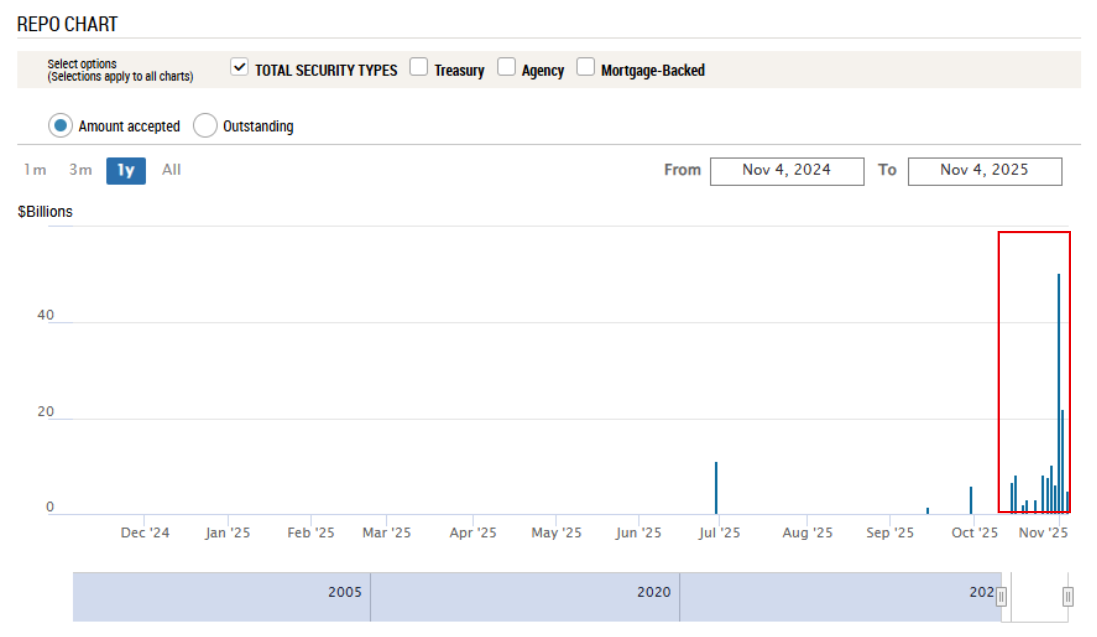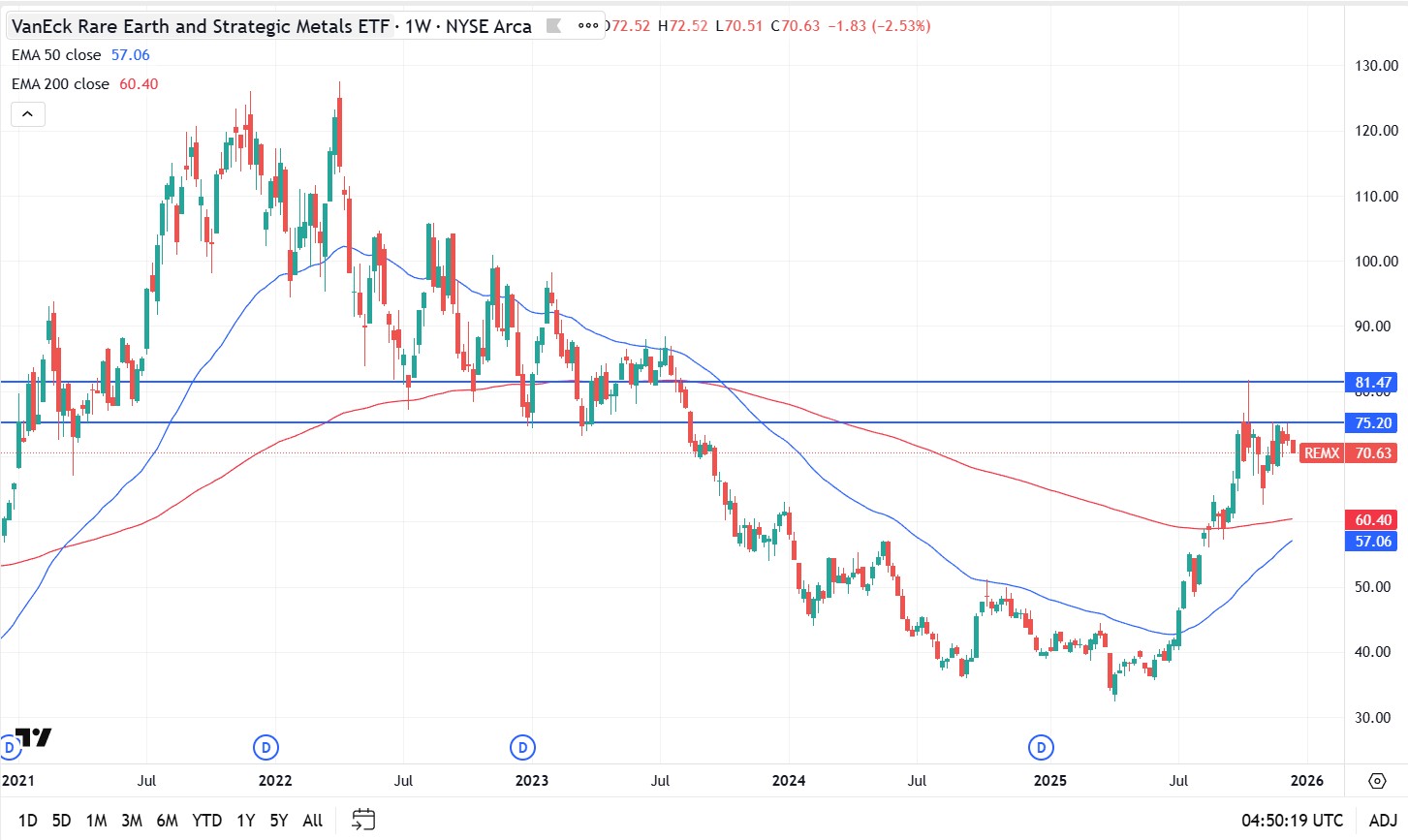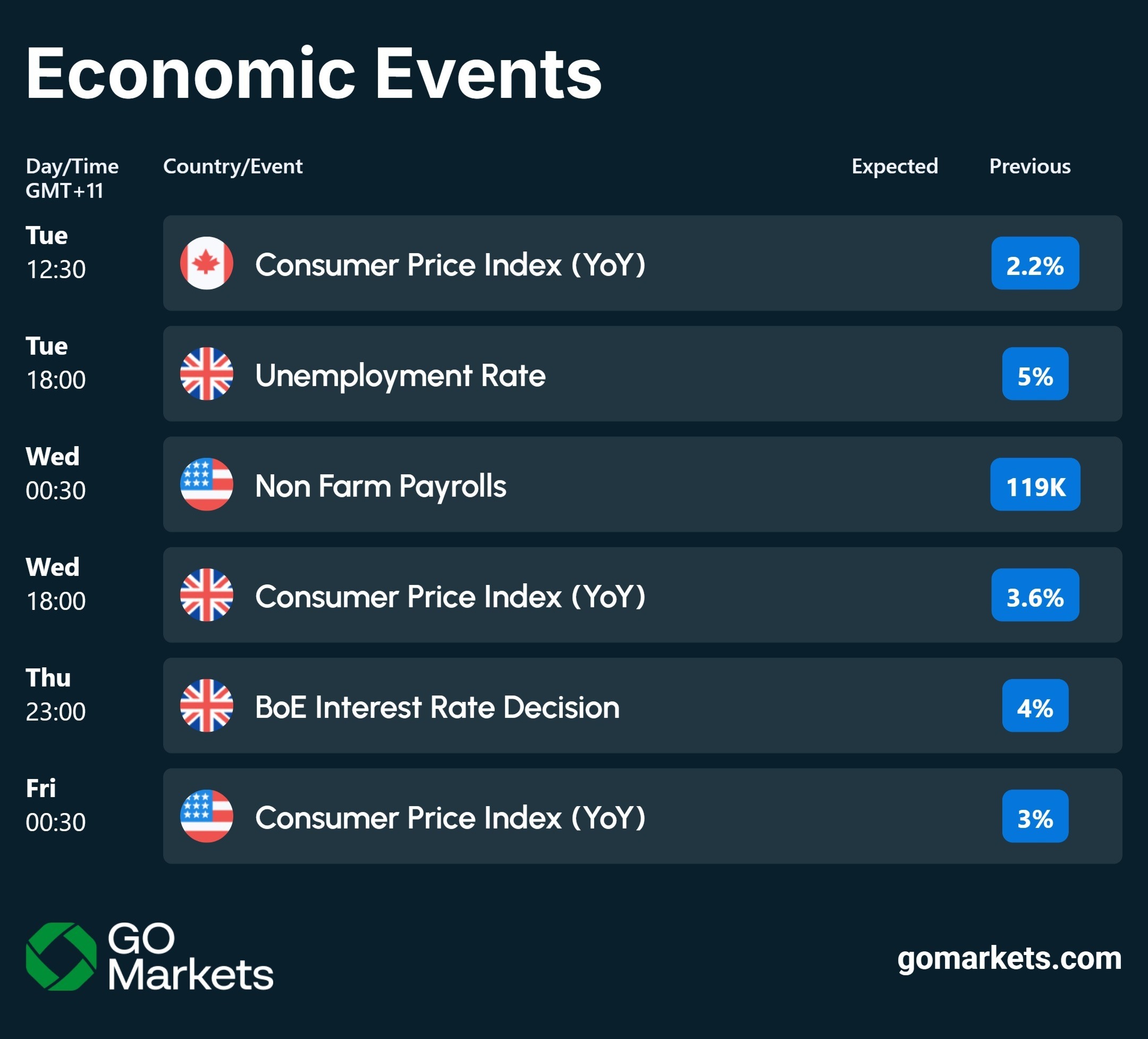近期,全球投资者越来越明显地感受到一个信号——美元的钱,开始“紧”了。这似乎有些不对劲,美联储10月底刚刚降息,理论上市场流动性应该更宽松,资金成本更低,但现实却是美元资金反而愈发紧张,资产价格开始同步下挫。这究竟是怎么回事?先看一个最直接的指标:纽约联储的正回购操作(Repo)和逆回购操作(Reverse Repo)。一个基本的原理是:Repo 上升、Reverse Repo 下降 = 市场资金紧张;Repo 下降、Reverse Repo 上升 = 市场资金充裕。10月末,联储的正回购操作量一度达到 500亿美元,这一数值在以往往往出现在极端流动性紧张的时刻。更关键的是,这种“抽水”并非短暂的月末现象——进入11月初后,正回购仍在持续,这意味着美元市场的“钱紧”已经趋于常态化。


(纽联储官网)
资金紧张的根源在于:原先支撑流动性的“美元蓄水池”——ONRRP(超额逆回购工具)几乎被抽干了。
在过去两年,美联储在执行量化紧缩(QT)和财政部大量发债的同时,市场的流动性压力能通过ONRRP缓冲。但如今,这个高峰时期曾超过 2万亿美元 的“蓄水池”已经见底。
这意味着,财政部每多发一笔债、每回笼一笔资金,都将直接以消耗银行准备金为代价。
更雪上加霜的是,美国政府的“关门”也在加剧这一紧张。当前,美国政府停摆已进入第36天,创历史纪录,市场普遍预测将会持续更久。虽然财政部仍在继续发行美债,但政府支出却被迫收缩——这造成了所谓的“只收钱不花钱”的状态。结果是财政部的 TGA账户余额 从关门前的 8000亿美元 飙升至 1万亿美元。
这相当于财政部把市场的钱吸走,暂时“锁进保险柜”,导致金融系统内的资金流动性被进一步抽走。

(美国财政部官网)因此,美联储降息≠流动性宽松。流动性收紧最先体现在资产价格上。鲍威尔释放“鹰派降息”信号,美元走强压制非生息资产(美股、黄金、数字货币),BT币已跌破10万关键技术与心理支撑位。股票方面,尽管AMD、英伟达等AI概念股业绩亮眼,但估值已高企;一旦预期无法持续超越,抛压立即显现。美股在强劲的企业盈利支撑下,仍然出现广度恶化、板块分化严重的迹象——少数科技巨头拉动指数,而多数板块早已疲弱。近期,美股盘中波动明显加大。大盘科技股盘前集体走低,Palantir、AMD 等年内翻倍的热门股出现回吐,而小盘股指数罗素2000则因流动性担忧大幅下跌。多家华尔街机构已开始提示短期调整风险:摩根士丹利与高盛均警告未来12–24个月内市场或回调超10%;美国银行称当前AI板块和消费板块估值“已被透支”;Piper Sandler认为,六个月的牛市之后,市场正在寻找一次“健康的修正”。总结来说,盈利没问题,但资金太紧。过去一周,比特币跌破10万美元关键支撑位,创下年内第二大单日跌幅;以太坊也同步重挫超过10%。黄金从高点跌落到4000美金/盎司,苦苦挣扎在整数位上。市场的“贪婪指数”迅速转为“极度恐惧”。

钱荒之下,现金为王。数字货币和黄金都是“无息资产”,当美元利率仍高、而流动性又紧时,这类资产当然最先被抛售。短期看,美元的“钱紧”确实是一个政策性扰动。一旦美国政府重新开门,财政支出回流,TGA账户下行,流动性将得到缓解。市场也在等待未来两周的经济数据,以重新定价12月的降息预期。另外,本周三还需关注美最高法院关于特朗普政府依据《国际紧急经济权利法》发起全球关税是否合法的审理——如果判定不合法,这将是对总统权限边界的重新划定,美债、美股反而可能双双下跌。在这样的阶段,建议分层思考:
- 长期投资者:若已具备股、债、黄金等多元化配置,无需恐慌。市场的短期波动反而创造了优质资产的加仓窗口。
- 短线交易者:在美国政府重新开门前,适当对冲股票头寸(如配置防御性板块、买入波动率或保护性期权),以应对政策真空期与流动性扰动。
- 资产配置层面:流动性紧缩往往是“转折期信号”。美联储一旦释放宽松信号,资产价格将快速反弹。保持现金、等待机会,或许比急于抄底更重要。
当财政扩张与货币紧张的矛盾同时存在,美国金融市场正经历一个微妙的临界点。短期的钱确实“紧”了,但正如历史无数次验证的那样:每一次“钱荒”,最终都以更猛烈的放水收场。
免责声明:GO Markets 分析师或外部发言人提供的信息基于其独立分析或个人经验。所表达的观点或交易风格仅代表其个人;并不代表 GO Markets 的观点或立场。
联系方式:
墨尔本 03 8658 0603
悉尼 02 9188 0418
中国地区(中文) 400 120 8537中国地区(英文) +248 4 671 903
作者:
Christine Li | GO Markets 墨尔本中文部


.jpg)

.jpg)

%20(1).jpg)
.jpg)





.jpg)
